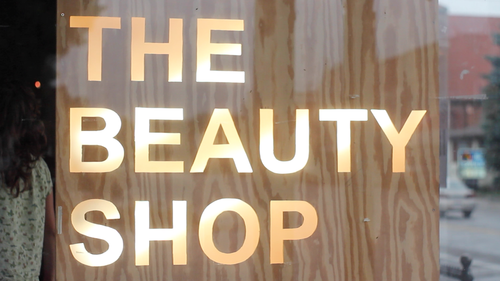While the commodification of music is alive and well and in need of combat in US cities like Chicago, San Francisco, and Minneapolis, perhaps the most exciting aspects of what the DIY movement can be and mean for American culture exist in places we don’t hear about so often. If you grew up in a somewhat isolated town, more than an hour from the majority of venues hosting live music, it was easy to think of music as an independent activity… something you listened to or made alone, not something that brought you together with others or that you helped others make. When we saw The Vera Project headquarters in Seattle, our minds were sorta blown: What if we’d grown up with a space like this, dedicated to all-ages events, providing really, really cool interactive activities, accessible to us?

It’s amazing and emboldening that The Vera Project exists and that it’s as big and funded as it is (though they still have to fight for funding all the time, and resort to collaboration with corporations they’d rather avoid). It’s also sad and symbolic of the way we think about the arts in this country that there aren’t more organizations like it, in places off the coasts, outside of big cities. When we found out about Fairfield, Iowa’s DIY community, we were excited to see something in the middle of Iowa cornfields, in a place you probably wouldn’t go unless you were told to. So, as awesome as it would have been to grow up in Seattle with access to the Vera Project, it would have been equally (if not more) cool to find something like The Beauty Shop in your town square.
Fairfield is a small city in Southeast Iowa, about five hours from Chicago, 20 miles from the American Gothic house, possibly most well known for its large population of transcendental meditators and Maharshi University. It’s also home to the Beauty Shop, a DIY venue right on the edge of town square with a residency program that invites an artist a month to come to Fairfield, focus intensely on a project of their choice and learn, share, and interact with the community.
Residents are given free room and board, a bicycle, and a coffee a day. They’re not pressured to walk out of the month with a fully formed project, just to use Fairfield as an incubator, one they emerge from with a better handle on what they’re trying to do, so they can continue to move in that direction. The residency is fully funded by the community: The Beauty Shop asks for $10 a month from 100 community members, who in turn receive free admission to the shows put on at the Beauty Shop and any workshops held by the artist in residence.
Taylor Ross is part of the small, dedicated crew of kids behind the Beauty Shop, most of whom grew up in Fairfield, left and then returned ready to build something. She hosts the residents at her home each month and helped found and grow the seeds for the Beauty Shop from a sweaty punk show room to a fully functional café and arts space. She also formed, planned, and organized the residency program, which began in December 2011. Stay tuned for much more about the Beauty Shop — it was one of the most exciting and original places we went on this trip — but for now, here are some of her thoughts:
“The residency is an experiment in community projects. [Especially] in this economy when people aren’t really giving any money away and a lot of arts and music programs are being cut across the country… and the U.S. hasn’t ever been really good at supporting the arts and music anyway… although it’s a creative hotspot, which is a really interesting mix… There’s something about just the mosh pit of things coming together but at the same time, governmentally, we never really had a lot of support for it.
And because of that, it’s been a really awesome experience to see if people can choose to support what they actually care about in a small way. So, when we went to the community and asked them to pledge $10 a month for a year in exchange for free workshops and concerts and a free cup of coffee, the hope was that it could be sustained…forever. It was all about having a comfortable space covering the minimum costs and just letting it be that way.
I think it’s really exciting to have projects that are basically built to feed back into their own system, so we’re paying rent to our own project, which is really exciting, because it means we’re feeding ourselves and the community is feeding itself.
Part of the residency is very much just not having guidelines for what (residents) need to do while they’re here and trust that they are hard workers that something beautiful will come out of it. And even if, at the end, there is very little to physically show for it, that it will develop into something really rich.”
In order for more places like this to crop up in the small towns of the country, we need resources — and while there are some amazing guidelines and networking resources out there (See: DoDiy.org and In Every Town: An All-Ages Manualfesto), sometimes the best resource is a model. The Beauty Shop is sustainable, and in that, both modest and pretty revolutionary at the same time. Taylor mentioned in our interview that she didn’t necessarily want The Beauty Shop to grow upwards, but maybe outwards, with neighboring towns starting their own something like it.
If you’re ever in Iowa, try to make a wrong turn and end up in Fairfield. There’s much to learn from what’s going on.